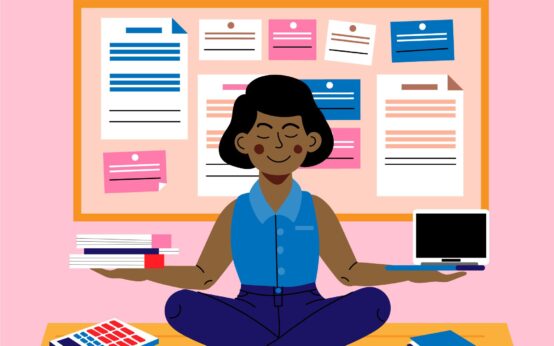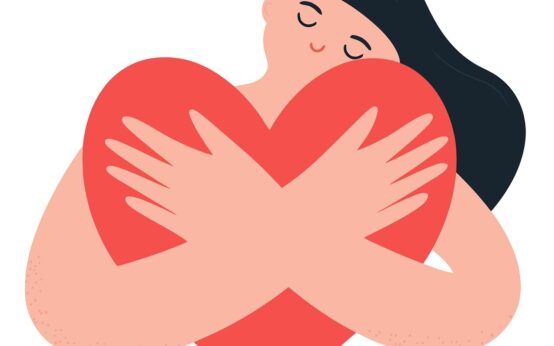Have you ever felt anxiety creeping in, making your heart race and your mind swirl with a whirlwind of worries? Anxiety can manifest in numerous ways and can be incredibly overwhelming. However, there’s a powerful tool you might not have considered yet: mindfulness techniques. These methods have been shown to help manage anxiety effectively, bringing you peace and grounding. Let’s explore how you can integrate mindfulness into your life to combat anxiety.
Understanding Anxiety
Before diving into how mindfulness can help, it’s important to understand what anxiety is. Anxiety is your body’s natural response to stress. It’s a feeling of fear or apprehension about what’s to come, often referred to as the “fight or flight” response. While a little anxiety can be beneficial, motivating you to work harder or stay alert, chronic anxiety can have detrimental effects on your daily life.
For a deeper explanation of how anxiety functions and is treated, see Harvard University’s research on mindfulness and anxiety.
Types of Anxiety Disorders
There are various types seen in anxiety disorders, each with distinct characteristics that can affect your daily life in different ways:
- Generalized Anxiety Disorder (GAD): This involves persistent and excessive worry about different activities or events. These feelings are difficult to control and can interfere with daily activities.
- Panic Disorder: This is characterized by recurring panic attacks, which include symptoms like heart palpitations, sweating, trembling, or feelings of impending doom.
- Social Anxiety Disorder: This revolves around intense fear of social or performance situations, where you may be judged or scrutinized, leading to avoidance of such situations.
- Specific Phobias: These involve an intense fear of a specific situation or object, like heights or spiders, that is out of proportion to the actual danger posed.
Understanding which type of anxiety you’re dealing with can help you apply the right mindfulness techniques to manage your symptoms effectively. Research such as this study, published by the NIH, provides evidence supporting mindfulness as an effective complementary approach for anxiety management.
What Is Mindfulness?
Mindfulness is a mental state achieved by focusing your awareness on the present moment, while calmly acknowledging and accepting your feelings, thoughts, and bodily sensations, without judgment. It’s about being fully engaged with the here and now, rather than being caught up in worries about the past or future. For a practical introduction to mindfulness, visit the Mayo Clinic’s mindfulness exercise guide.
The Origins of Mindfulness
Mindfulness finds its roots in Buddhist meditation but has become a popular practice in psychotherapy and self-care. Mindfulness is about embracing each moment with openness and curiosity. With consistent practice, it helps you gain perspective on your life, including your anxiety.
The Benefits of Practicing Mindfulness
Practicing mindfulness can bring numerous benefits:
- Reduced Stress: Studies have shown that mindfulness significantly reduces stress levels, allowing you to view problems with clarity.
- Enhanced Emotional Health: Regular practice can improve your emotional well-being and resilience to stressors.
- Increased Focus: Mindfulness enhances your concentration and attention to detail by encouraging you to live in the moment.
- Road to Acceptance: It aids in accepting yourself and your experiences, reducing the impact of negative self-concepts.
- Better Sleep: Mindfulness can improve sleep quality by helping calm a racing mind.
For a detailed look at these benefits and exercises, read Positive Psychology’s guide on using mindfulness for anxiety.

How Mindfulness Helps Manage Anxiety
Let’s discuss how mindfulness can be a powerful ally in managing anxiety.
Grounding in the Present
Anxiety often involves worrying about future events or ruminating over past mistakes. Mindfulness brings your attention back to the present, where you are grounded and can exert control. By focusing on the now, you reduce worries about the uncontrollable future and unchangeable past.
Recognizing and Accepting Emotions
Mindfulness encourages you to observe your emotions without judgment. When you accept your feelings of anxiety, rather than suppressing them, you lessen their power over you. It’s about acknowledging them and gently letting them pass, rather than engaging them in a battle.
Breaking the Cycle
Anxiety thrives on cycles of negative thoughts. Practicing mindfulness can help interrupt these patterns by redirecting your attention to your breathing or bodily sensations. This breaks the cycle and stops anxious thoughts from spiraling out of control.
Cultivating Relaxation Response
Mindfulness techniques can activate your body’s relaxation response, which counteracts the fight-or-flight response. This involves deep breathing, which calms your nervous system and leads to physical relaxation.
You can learn more about how mindfulness influences brain and emotional regulation in this peer-reviewed study from Frontiers in Psychology.
Mindfulness Techniques to Manage Anxiety
Now, let’s explore some mindfulness techniques that can be particularly effective in managing anxiety. You can explore a range of guided exercises and meditation scripts in the Mayo Clinic’s mindfulness exercises section.
Mindful Breathing
Mindful breathing is a simple yet powerful tool to help manage anxiety. The technique involves focusing on your breath as it flows in and out.
Steps for Mindful Breathing:
- Find a comfortable sitting position.
- Close your eyes to eliminate distractions, if you feel comfortable.
- Focus on your natural breathing pattern.
- If your mind wanders, gently bring your attention back to your breath.
- Continue this practice for a few minutes each day.
Body Scan Meditation
A body scan meditation helps you observe bodily sensations systematically from head to toe. It’s an effective way to connect with your body and identify areas of tension.
Steps for Body Scan Meditation:
- Lie down comfortably.
- Close your eyes and take a few deep breaths.
- Begin by focusing on your toes, noticing any sensations.
- Gradually move your focus up through your body, part by part.
- Observe any tension and imagine it melting away with each breath.
Mindful Walking
Mindful walking involves paying full attention to the experience of walking.
Steps for Mindful Walking:
- Choose a route where you can walk uninterrupted.
- Focus on the sensation of your feet touching the ground.
- Pay attention to your breath and surroundings.
- Walk slowly, savoring each step and the environment.
Loving-Kindness Meditation
This meditation focuses on cultivating compassion towards yourself and others.
Steps for Loving-Kindness Meditation:
- Find a comfortable position to sit or lie down.
- Close your eyes and breathe deeply.
- Silently repeat phrases of well-wishing, such as “May I be happy,” “May I be healthy.”
- Extend these wishes to loved ones and then to everyone globally.
Mindful Observation
Mindful observation involves noticing and appreciating simple things in the environment with fresh eyes.
Steps for Mindful Observation:
- Choose an object to focus on, like a flower or a cup of tea.
- Observe it without labeling or judging.
- Notice its color, shape, and texture.
- Spend a few moments appreciating it fully.

Incorporating Mindfulness into Your Daily Routine
To truly benefit from mindfulness, it can be helpful to integrate it into your everyday life. Here’s how to do it joyfully:
Start Small
Don’t worry about dedicating hours to practice every day. Start with five to ten minutes and gradually increase as you become more comfortable with mindfulness.
Set a Routine
Identify a specific time each day for mindfulness practices. Consistency helps it become a habit.
Be Patient with Yourself
Mindfulness is a skill that takes time to develop. There will be days when it feels challenging. Be patient with yourself and acknowledge every small progress you make.
Practice Mindfulness in Routine Activities
Incorporate mindfulness into everyday activities like eating, showering, or even brushing your teeth. This helps you remain present and turn everyday occurrences into moments of mindfulness.
Overcoming Challenges in Practicing Mindfulness
There might be obstacles in your path to practicing mindfulness. Acknowledge these challenges and find ways to overcome them.
Navigating Restless Mind
It’s normal for your mind to wander. When this happens, gently bring your focus back to your breath or the present task. Don’t be hard on yourself; it’s part of the process.
Handling Intense Emotions
You might encounter strong emotions during mindfulness practices. Instead of avoiding them, observe them with kindness and allow them to pass naturally.
Dealing with Resistance
You may experience resistance to mindfulness practices. Reflect on reasons for this and remind yourself of the benefits.

Measuring Progress and Success
In the journey of mindfulness, it’s essential to measure progress without being overly critical.
Self-Reflection
Take time at intervals to reflect on your mental and emotional state before and after practicing mindfulness. Notice changes in your response to anxiety.
Journaling
Keep a mindfulness journal to track your experiences, breakthroughs, and challenges. Writing can bring clarity and acknowledge your journey and growth.
Occasional Self-Check-in
Periodically check in with how you feel, whether it’s the reduced frequency of anxiety attacks, increased calmness, or improved emotional well-being.
Conclusion
In managing anxiety, mindfulness techniques stand as a beacon of hope, providing strategies to embrace the present and nurture inner calm. As you embark on integrating these practices into your life, remember it’s not about reaching perfection. It’s about discovering serenity in small moments and harnessing peace amidst life’s ebbs and flows. Your journey in mindfulness is personal, and every mindful breath takes you a step closer to mastering anxiety.


 How To Create A Mindfulness Routine For Beginners
How To Create A Mindfulness Routine For Beginners  The Best Mindfulness Apps To Enhance Your Practice
The Best Mindfulness Apps To Enhance Your Practice  How To Practice Self Compassion: Tips And Techniques
How To Practice Self Compassion: Tips And Techniques  Daily Mindfulness: 5 reasons It Improves Your Mental Health
Daily Mindfulness: 5 reasons It Improves Your Mental Health  How To Cultivate A Growth Mindset For Personal Development
How To Cultivate A Growth Mindset For Personal Development  The Most Effective Meditation Techniques For Beginners
The Most Effective Meditation Techniques For Beginners  How To Create A Skincare Routine For Oily Skin
How To Create A Skincare Routine For Oily Skin  The Best Ingredients For Anti-Aging Skincare
The Best Ingredients For Anti-Aging Skincare  Skincare Myths That Are Wrecking Your Glow
Skincare Myths That Are Wrecking Your Glow  Natural Skincare 101: Everything you Need to Know
Natural Skincare 101: Everything you Need to Know  The Ultimate Guide To Sunscreen: What You Need To Know
The Ultimate Guide To Sunscreen: What You Need To Know  Guide to the Best Anti acne Products for Clear Skin
Guide to the Best Anti acne Products for Clear Skin